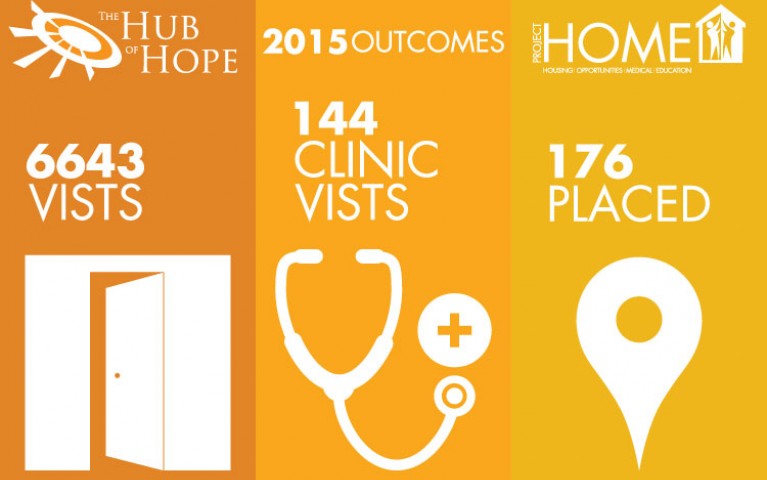Blog
2015 Hub of Hope Report
Monday, June 29, 2015

The latest Hub of Hope Outcomes Report is now available. The Hub of Hope is a walk-in engagement center run by Project HOME located in the concourses under Two Penn Center in Philadelphia. It provided social and health services from January through April 2015 to individuals experiencing chronic homelessness who lived in Center City.
Goals of the Hub
- Transition people experiencing homelessness into permanent housing
- Provide low-barrier access to centralized co-located physical and behavioral healthcare and connect people to ongoing primary care
- Deepen our understanding of strategic and effective tools and methods to end homelessness
2015 Highlights
- 6643 visits to the Hub from 1261 unique individuals. 1005 people were new to the program in 2015.
- 10,000+ cups of coffee, tea, water, or hot chocolate served by 35+ volunteers.
- 445 people sat down with a case manager; 236 of whom had histories of long-term homelessness or
- other vulnerability indicators.
- 144 clinic visits with 98 unique individuals.
- 119 clinical assessments and forms completed for housing, services, and benefits
- 176 people placed into shelter, treatment, and other housing options around the City (101 of these individuals were deemed long-term homeless/fragile).
- 248 total placements made – 176 initial placements and 72 follow-up placements (148 total placements of long-term homeless/fragile individuals – 101 initial and 47 follow up placements) Invited an evolving population of participants, many of whom are in recovery, actively addicted, mentally ill or vulnerable.
- Engaged individuals on the margins of care during a “treatable moment.” Provided possibility for consistent follow up
- Connected and reconnected difficult-to-locate individuals with supports around the City.
- High level of engagement from multiple professionals, volunteers, and partners.
- Nurtured a sense of community and hope among participants, volunteers, staff, and neighbors through creating a local coffee shop with “regulars.” People were able to be human across many lines of difference, and, to joke, relax, work, inspire, check-in with and track one another.